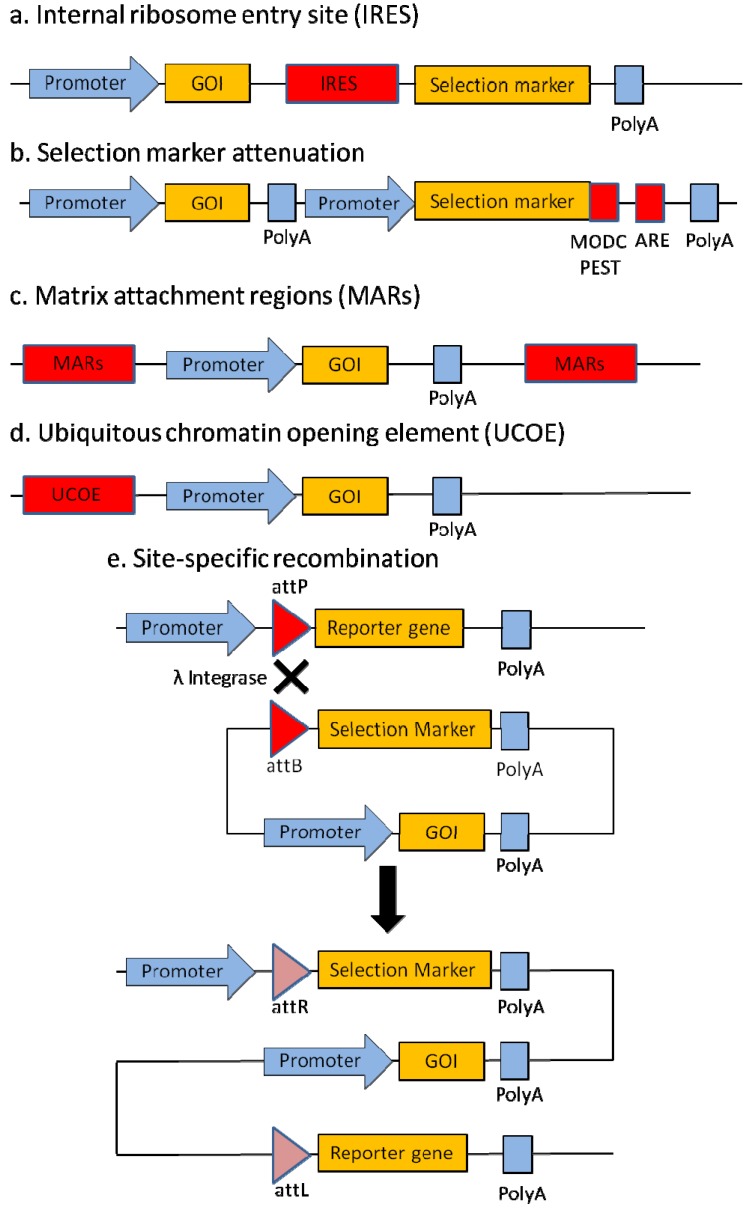Figure 2.
Illustration of expression vector engineering technologies for recombinant protein production in mammalian cells. (a) Selection marker attenuation increases the selection stringency which leads to increased probability of isolating cell clones with high productivity of the recombinant gene of interest (GOI). One of the strategies for selection marker attenuation involves the use of mRNA and protein destabilizing elements such as AU-rich elements (ARE) and murine ornithine decarboxylase (MODC) PEST region respectively to reduce the expression of the selection marker. (b) The internal ribosome entry site (IRES) is used to link expression of multiple genes. Placement of the selection marker gene downstream of the gene of interest ensures that expression of selection marker is dependent on the successful transcription of the GOI. (c) Matrix attachment regions (MARs) flanking the gene of interest promote gene expression by creation of chromatin loops, which maintain a transcriptionally active chromatin structure. (d) Ubiquitous chromatin opening elements (UCOEs) flanking the gene of interest augment gene expression by sustaining the chromatin in an “open” configuration. (e) Example of site-specific recombination illustrated here uses mutant λ integrase to integrate an expression cassette into the genome. The recombination event is irreversible as attP and attB target sequences are changed to attR and attL sites upon recombination. A successful recombination event will also place the promoterless selection marker gene downstream of a promoter and activate its expression to facilitate cell clone selection, while disrupting the expression of the reporter gene. Site-specific recombination to integrate the GOI into a previously determined genomic hotspot is thus promoted with the use of the recombinase and its corresponding target sequences. Identification of such genomic hotspot is dependent on the expression level of a single copy of reporter gene randomly integrated into the genome.

